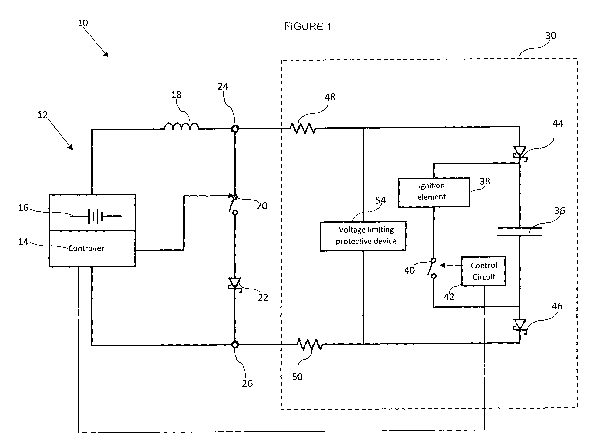Some of the information on this Web page has been provided by external sources. The Government of Canada is not responsible for the accuracy, reliability or currency of the information supplied by external sources. Users wishing to rely upon this information should consult directly with the source of the information. Content provided by external sources is not subject to official languages, privacy and accessibility requirements.
Any discrepancies in the text and image of the Claims and Abstract are due to differing posting times. Text of the Claims and Abstract are posted:
| (12) Patent Application: | (11) CA 3127818 |
|---|---|
| (54) English Title: | BOOST PUMP |
| (54) French Title: | POMPE A CHARGE DE SURVOLTAGE |
| Status: | Examination |
| (51) International Patent Classification (IPC): |
|
|---|---|
| (72) Inventors : |
|
| (73) Owners : |
|
| (71) Applicants : |
|
| (74) Agent: | OYEN WIGGS GREEN & MUTALA LLP |
| (74) Associate agent: | |
| (45) Issued: | |
| (86) PCT Filing Date: | 2020-01-23 |
| (87) Open to Public Inspection: | 2020-08-13 |
| Examination requested: | 2023-02-03 |
| Availability of licence: | N/A |
| Dedicated to the Public: | N/A |
| (25) Language of filing: | English |
| Patent Cooperation Treaty (PCT): | Yes |
|---|---|
| (86) PCT Filing Number: | PCT/ZA2020/050004 |
| (87) International Publication Number: | ZA2020050004 |
| (85) National Entry: | 2021-07-23 |
| (30) Application Priority Data: | ||||||
|---|---|---|---|---|---|---|
|
A detonator installation (10) in which a detonator fire capacitor (36) which is connected in series with an inductor (18) is charged from a low voltage source (16) by repeatedly opening and closing a switch (20) thereby to cause a collapsing magnetic field in the inductor (18) which results in a charging current flow to the capacitor (36).
L'invention concerne une installation de détonateur (10) dans laquelle un condensateur d'amorce de détonateur (36), qui est connecté en série avec une bobine d'induction (18) est chargé à partir d'une source basse tension (16) par l'ouverture et la fermeture répétées d'un commutateur (20), afin de produire un champ magnétique d'effondrement dans la bobine d'induction (18) entraînant un flux de courant de charge vers le condensateur (36).
Note: Claims are shown in the official language in which they were submitted.
Note: Descriptions are shown in the official language in which they were submitted.

2024-08-01:As part of the Next Generation Patents (NGP) transition, the Canadian Patents Database (CPD) now contains a more detailed Event History, which replicates the Event Log of our new back-office solution.
Please note that "Inactive:" events refers to events no longer in use in our new back-office solution.
For a clearer understanding of the status of the application/patent presented on this page, the site Disclaimer , as well as the definitions for Patent , Event History , Maintenance Fee and Payment History should be consulted.
| Description | Date |
|---|---|
| Letter Sent | 2024-01-23 |
| Inactive: Office letter | 2023-03-08 |
| Letter Sent | 2023-03-01 |
| Refund Request Received | 2023-02-10 |
| Request for Examination Received | 2023-02-03 |
| Request for Examination Requirements Determined Compliant | 2023-02-03 |
| All Requirements for Examination Determined Compliant | 2023-02-03 |
| Inactive: Request Received Change of Agent File No. | 2023-01-19 |
| Common Representative Appointed | 2021-11-13 |
| Inactive: Cover page published | 2021-10-13 |
| Letter sent | 2021-08-23 |
| Priority Claim Requirements Determined Compliant | 2021-08-20 |
| Inactive: IPC assigned | 2021-08-17 |
| Inactive: IPC assigned | 2021-08-17 |
| Inactive: IPC assigned | 2021-08-17 |
| Application Received - PCT | 2021-08-17 |
| Inactive: First IPC assigned | 2021-08-17 |
| Request for Priority Received | 2021-08-17 |
| National Entry Requirements Determined Compliant | 2021-07-23 |
| Application Published (Open to Public Inspection) | 2020-08-13 |
There is no abandonment history.
The last payment was received on 2023-01-11
Note : If the full payment has not been received on or before the date indicated, a further fee may be required which may be one of the following
Patent fees are adjusted on the 1st of January every year. The amounts above are the current amounts if received by December 31 of the current year.
Please refer to the CIPO
Patent Fees
web page to see all current fee amounts.
| Fee Type | Anniversary Year | Due Date | Paid Date |
|---|---|---|---|
| Basic national fee - standard | 2021-07-23 | 2021-07-23 | |
| MF (application, 2nd anniv.) - standard | 02 | 2022-01-24 | 2022-01-12 |
| MF (application, 3rd anniv.) - standard | 03 | 2023-01-23 | 2023-01-11 |
| Request for examination - standard | 2024-01-23 | 2023-02-03 |
Note: Records showing the ownership history in alphabetical order.
| Current Owners on Record |
|---|
| DETNET SOUTH AFRICA (PTY) LTD |
| Past Owners on Record |
|---|
| MICHIEL JACOBUS KRUGER |